Trump factor weighs on the region’s economies
2 January 2025

If 2024 was a slow road back to stabilisation for economies in the Middle East and North Africa (Mena) region, with lower interest rates and generally improved fiscal positions providing some ballast against tumultuous geopolitical risk events, the coming year portends yet more instability with the return to the White House of Donald Trump. This will, for good or ill, have a decisive impact on the region’s economic trajectory.
 The region is looking at a more rapid economic growth rate in 2025 than the previous year. The World Bank, which estimated real GDP growth in the Mena region of 2.2% in 2024, sees region-wide growth at 3.8% in 2025, with Gulf economies driving this improvement.
The region is looking at a more rapid economic growth rate in 2025 than the previous year. The World Bank, which estimated real GDP growth in the Mena region of 2.2% in 2024, sees region-wide growth at 3.8% in 2025, with Gulf economies driving this improvement.
This reflects the gradual phasing out of voluntary oil production cuts starting from December 2024.
Mena oil importers will see real GDP growth expand from just 1.3% in 2024 to 3.4% in 2025, says the World Bank.
Interest rates are a key ingredient in the mix, linking to the second Trump presidency, with its likely ramp-up of global trade-war pressures.
If the president-elect follows through on his tariff plans, which range from a proposed 60% on Chinese imports to 20% on the rest of the world, it will trigger higher inflation, thereby slowing the Federal Reserve’s moves to cut interest rates.
So while Mena exports to the US are unlikely to suffer direct fallout from planned tariffs – according to consultancy Capital Economics, the share of Mena goods exports going to the US stood at just 3.5% this decade – it is the secondary effects that could knock regional economies off their stride.
“If we do get the tariffs, and that leads to higher inflation in the US, that also means there will be tighter monetary policy in the Gulf countries with dollar pegs than would otherwise be the case,” says James Swanston, Mena economist at Capital Economics.
The possibility of a stronger dollar in 2025 means that for those economies with dollar pegs, their domestic industries could become less competitive. This jars with the thinking behind regional economic diversification schemes such as Saudi Arabia’s Vision 2030, which are predicated on developing manufacturing sectors that are mainly export-oriented.
 Regional fortitude
Regional fortitude
The largest Gulf economies should at least be well positioned to withstand such headwinds, even if a trade war hits the global economy. According to the World Bank, a lower interest rate environment, together with further investment and structural reform initiatives, will yield non-oil growth of more than 4% in the region’s two largest economies, Saudi Arabia and the UAE. This – plus higher oil production – should be enough to offset any loss of momentum from lower oil prices and weaker fiscal balances.
Saudi Arabia is expected to show steady growth in 2025, with its Q3 2024 average GDP growth of 2.8% underscoring the kingdom’s stronger performance. However, the robust spending of past years is giving way to a more conservative fiscal approach, and that will inevitably impact project activity.
Riyadh’s 2025 pre-budget statement revealed a tougher fiscal stance for 2025, with anticipation of a deficit of 2.9%. With revenues expected to be 3.5% weaker in year-on year terms in 2025, this will mean reduced spending – around 3% lower than that outlined in the 2024 budget.
“Saudi Arabia is being a bit more prudent about how they spend their money,” says Swanston.
While there will be continued support for current spending, and for the official gigaprojects, capital expenditure will shoulder the burden of cuts. This will likely feed through to weaker non-oil GDP growth.
The UAE should see comparatively stronger growth momentum in 2025, driven by a combination of healthier dynamics in its touchstone real estate and tourism sectors, and the impact of infrastructure investment programmes.
NBK Economic Research sees the UAE non-oil economy enjoying another year of 4%-plus growth in 2025, possibly as high as 5.1%. However, the bank’s economists offer a note of caution, as this is still below the 7.2% annual average growth rate the government requires to achieve the Vision 2031 target of a doubling in GDP by 2031.
On the fiscal front, the UAE is looking at a better situation in 2025. “The UAE has diversified its revenues to the point where non-oil revenues are larger than oil revenues. So, even if oil prices turn negative, they still wouldn’t run a deficit,” says Swanston.
Qatar is maintaining a tight fiscal policy, but from late 2025 it will begin to feel the effects of a significant predicted revenue boost when the first phase of its liquefied natural gas (LNG) expansion comes on stream. This will eventually add 40% to the country’s existing LNG export capacity of 77 million tonnes a year.
Kuwait, meanwhile, is set to run continued budget deficits, although the country’s non-oil economy has emerged from two years of negative growth and is forecast by NBK Research to expand by 2.6% in 2025. But Kuwait faces structural challenges, including a low investment rate and the need for fiscal consolidation, which will absorb policymakers in 2025.
Oman, in contrast, looks to be in a better position than in previous years. According to an Article IV assessment released by the Washington-headquartered IMF in November, reform implementation under Oman Vision 2040 is proceeding decisively, along with initiatives to improve the business environment, attract large-scale investments and empower small and medium-sized enterprises.
The sultanate’s economy continues to expand. Growth, says the IMF, is set to rebound starting in 2025, supported by higher hydrocarbons production and the continued acceleration of non-hydrocarbons growth.
Bahrain faces a challenge when it comes to containing the country’s rising debt-to-GDP ratio, which grew from 100% in 2020 to just under 130% in 2024. The country needs to press ahead with fiscal consolidation moves if it is to improve the debt position.

Wider region
Outside the GCC, the picture will vary in 2025. Egypt has realistic expectations of a better year ahead, with falls in inflation and interest rates providing relief after a tough 2024. But foreign investors may feel a note of alarm at recent indications from President Abdul Fattah El-Sisi that the challenges associated with the country’s reform programme – a hint at the tough impact of reform on Egyptian consumers – might lead it to review its existing IMF deal.
Tunisia presents a similar challenge. President Kais Saied’s proposed bill stripping the central bank of its ability to set interest rates and influence exchange rate policy without government consent is unlikely to encourage investors.
In Egypt at least, there are silver linings that should assure investor confidence, even if the government’s commitment to reform wavers. “When it comes to the debt issue, everything’s in a pretty good place in Egypt,” says Swanston.
“Yes, interest service payments on the debt have risen over the past 12 months, and the feed-through means that they will still be paying quite high debt servicing costs over the next six months. But yields are coming down in terms of its dollar-denominated debt. Worries about default are not as strong as before.”
President El-Sisi may also find support from other sources. Given his previous close ties with the Trump administration in 2016-20, there may be a greater willingness in Washington to disburse funds to such an integral partner of US foreign policy, particularly when it has been buffeted by the Gaza conflict and the impact of Houthi attacks in the Red Sea.
Iraq’s economic fortunes remain bound up with the price of oil, which accounts for 90% of state revenues. The IMF has forecast a 4.1% GDP growth rate for Iraq in 2025, reflecting in part its surprising resilience to regional conflicts. However, lower oil prices may yet erode the country’s economic momentum.
Progress on major projects such as the Development Road would at least suggest prime minister Mohammed Shia Al-Sudani’s government is focused on long-term delivery and tackling Iraq’s overreliance on hydrocarbons exports.
Meanwhile, Iraq’s larger neighbour Iran, which saw GDP growth increase to 5% in the 2023-24 Iranian year, faces still bigger challenges linked to Trump’s return. It can expect to face a much tighter sanctions regime on its oil sector in 2025, with efforts to curb its ability to sell its crude oil on international markets expected to gain traction. The effects of these moves are still in the balance.
The positive news for Tehran is that several of its crude buyers appear to be undaunted by a reimposition of deeper curbs on exports. For example, Chinese refiners have been importing Iranian oil to the tune of 1.5 million barrels a day. The country’s seeming imperviousness to international financial pressures could undercut the impact of a beefed-up US sanctions regime, although few would relish being in the shoes of Iranian economic policymakers right now.
Exclusive from Meed
-
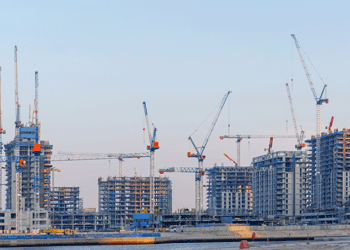 Managing risk in the GCC construction market
Managing risk in the GCC construction market19 December 2025
-
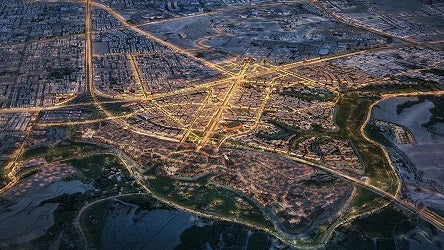 Diriyah signs land lease deal with King Saud University
Diriyah signs land lease deal with King Saud University19 December 2025
-
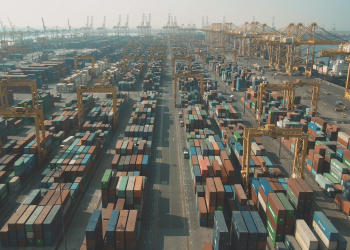 Kuwait to sign Mubarak port agreement next week
Kuwait to sign Mubarak port agreement next week19 December 2025
-
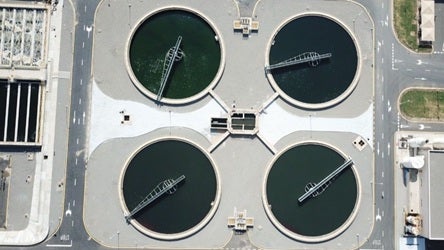 Metito consortium wins Mecca sewage scheme
Metito consortium wins Mecca sewage scheme19 December 2025
-
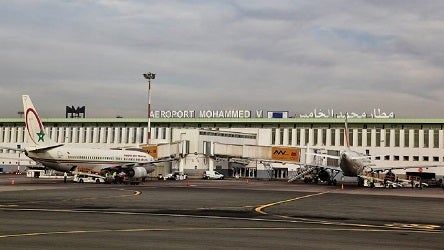 Morocco awards $1bn Casablanca airport terminal deal
Morocco awards $1bn Casablanca airport terminal deal19 December 2025
All of this is only 1% of what MEED.com has to offer
Subscribe now and unlock all the 153,671 articles on MEED.com
- All the latest news, data, and market intelligence across MENA at your fingerprints
- First-hand updates and inside information on projects, clients and competitors that matter to you
- 20 years' archive of information, data, and news for you to access at your convenience
- Strategize to succeed and minimise risks with timely analysis of current and future market trends

Related Articles
-
 Managing risk in the GCC construction market
Managing risk in the GCC construction market19 December 2025

The scale and complexity of construction projects under way in the GCC region has attracted global attention. And while large-scale project announcements continue to dominate the headlines, the underlying risks – insufficient financing, harsh contract clauses and a tendency to delay dispute resolution – are often overlooked.
Around the region, many contractors are experiencing difficulties once projects have started because they mistakenly believe they have the necessary in-house skillsets to navigate these complex issues.
MEED has convened a panel of construction consultants and specialists to develop a checklist to help contractors and subcontractors operating in the region to navigate the market’s challenges as the sector moves into 2026.
The proactive steps are aimed at positioning a company so that it can maximise recovery and mitigate threats posed by unresolved claims and poor commercial or contractual administration.
Systemic risk
The regional market is characterised by several systemic issues that amplify risks for contractors.
The fundamental problem is finance. Projects frequently suffer because they are not fully financed from the start, which places financial strain on contractors. This problem is then compounded by the region’s traditional contractual environment, which means disputes are typically not finalised until well after jobs have been completed, creating cash flow problems for contractors, particularly near the end of such projects.
Further financial strain is created by unconditional performance guarantees and retention. The combined requirement for advance payment bonds, a 10% performance bond and sometimes 5%-10% retention represents a significant draw on contractors’ cash flow. The growing tendency of employers to pull bonds further exacerbates the situation.
Many contractors sign up to one-sided contracts so as to secure more work, rather than challenging their employers. Key contractual issues include:
> Unrealistic timelines: Contractors set themselves up to fail by accepting unrealistic timescales on projects, despite the knowledge that the work often takes twice as long.
> Deficient design: A major risk, particularly on high-profile projects, is a lack of specification and design progress. Many contracts, such as the heavily modified Silver Book – a standard contract published by the International Federation of Consulting Engineers (Fidic) for turnkey engineering, procurement and construction projects – presuppose that the contractor has sufficient information to design, build and deliver, even when there is substantive information missing, which renders lump-sum pricing obsolete and inevitably leads to dispute.
> Lowest-bid mentality: Contractors often fail to factor necessary commercial support from legal and claims specialists into their tender figures, making their bid appear more competitive but leaving them without a budget to seek help until it is too late. As a result, projects are managed with budgets that are barely sufficient, rather than being run properly to a successful conclusion.

Supply-chain erosion
The quality and capacity of the subcontractor market, particularly in the mechanical, electrical and plumbing (MEP) field, has eroded significantly.
Some major MEP players have closed or left the market due to underpricing, prompting contractors to call in their performance bonds. This means the region is receiving progressively lower quality for increasingly higher costs, further straining the delivery phase for main contractors.
The risk of subcontractor insolvency is increasing and must now be considered a primary project risk. Contractors should monitor financial health, diversify subcontractor dependencies, challenge allocated resources and secure step-in rights wherever possible.
Many Silver Book contracts in the GCC now include heavily amended, employer-friendly clauses that push design and ground-risk even further onto the contractor – often beyond what Fidic intended. These amendments require careful review and firm pushback.
The GCC remains a market of opportunity, but success in 2026 will belong to contractors that combine disciplined tendering, transparent commercial governance and early issue resolution. Optimism is not a strategy; preparation is.
A 10-point checklist for contractors in 2026
1. Mandate contractual due diligence: Invest time and money into a thorough contract review before signing. Be prepared to challenge harsh clauses, particularly those unfairly allocating risk, such as unknown conditions and full design responsibility. Assume that bespoke rather than standard amendments govern your entitlement. Treat the special conditions as the real contract.
2. Factor commercial support into the budget: Do not omit the cost of essential commercial support from the tender, such as quantity surveyor teams, quantum and delay specialists, legal review and claims preparation. Even if not visible in the front-line figures, this cost – which could be as low as 0.01% of the project value – must be factored in to ensure a budget for early and continuous engagement.
3. Prepare a realistic baseline programme: Stop committing to programmes just to fit the tender. Develop a realistic programme from the start, identifying risks and including necessary code books to track delays early. Consider commissioning an independent programme review at the tender stage – this is common internationally and reduces later arguments about logic, durations and sequencing.
4. Confirm project funding: Ensure that the project financing is fully in position before starting work. Many problems stem from projects that are only partially financed, leading to cash running out near completion. Gone are the days of not asking employers for greater transparency when it comes to funding projects.
5. Establish a strong commercial and claims function: This is where commercial management starts. Set up systems to ensure contractual compliance, including seven-day claim notifications. Variations are inevitable, and proper substantiation is required to secure entitlement – if it is not recorded, it cannot be recovered. Diaries, cost records and notice logs remain the foundation of entitlement.
6. Seek early specialist engagement: Prevention is better than a cure. Bring in specialists early to examine time and cost issues before problems arise. Consultants can provide advice, help set up the correct commercial systems and prevent the escalation of unresolved issues.
7. Adopt an old-school approach to claims management: Technology is useful, but nothing beats resolving issues face to face. Engage directly with the employer’s team regularly to negotiate and agree claims early. This manages the client’s expectations when it comes to budgeting and allows the contractor to secure cash flow sooner. A simple early-warning culture – even when not contractually required – prevents surprises and builds trust with the client.
8. Avoid wasting resources: Focus claims efforts only on events that are actually recoverable and demonstrably critical. Contractors often waste time chasing things that will not be recoverable. Prioritise issues that are both time-critical and clearly fall under the employer’s risk – everything else should be logged but not pursued aggressively.
9. Upskill internal teams: Use specialist involvement as an opportunity to upskill your in-house commercial team. Have them sit alongside specialist consultants to learn proper commercial and contractual administration processes, creating a lasting work-culture benefit.
10. Push for faster dispute resolution: When a dispute arises, advocate for a swift resolution mechanism like adjudication, mediation or expert determination to temporarily resolve cash flow issues. Dispute adjudication boards are intended to give quick, interim decisions. However, if not set up from the start of the project, the process becomes protracted – sometimes taking many months – so fails to provide the cash-flow relief contractors urgently need. Where clients resist adjudication, propose interim binding mediation or expert determinations, or failing this, milestone-based dispute workshops – anything that accelerates getting cash back on site. MEED would like to thank Refki El-Mujtahed of REM Consultant Services (refki@rem-consultant.com; www.rem-consultant.com) for facilitating this article, as well as the following co-contributors:
Aevum Consult | Lawrence Baker | lawrence.baker@aevumconsult.com | www.aevumconsult.com
Decerno Consultancy | Lee Sporle | leesporle@decernoconsultancy.com | www.decernoconsultancy.com
Desimone Consulting | Mark Winrow | Mark.Winrow@de-simone.com | www.de-simone.com
Forttas | Derek O’Reilly & Martin Hall | derek.oreilly@forttas.com & martin.hall@forttas.com | www.forttas.com
IDH Consult | Ian Hedderick | ian.hedderick@idhconsult.com | www.idhconsult.com
White Consulting | Nigel White | nigelwhite@whiteconsulting-me.com | www.whiteconsulting-me.com
https://image.digitalinsightresearch.in/uploads/NewsArticle/15289183/main.gif -
 Diriyah signs land lease deal with King Saud University
Diriyah signs land lease deal with King Saud University19 December 2025
Saudi Arabia gigaproject developer, Diriyah Company, has signed a long-term land lease agreement with Riyadh Valley Company, an investment arm of King Saud University.
Diriyah Company will lease 552,000 square metres (sq m) of land from King Saud University for a period of 70 years.
The deal will enable the company to add the land bank to its second phase of the Diriyah Project, which is also known as DG2.
The agreement was signed by Diriyah Company's Group CEO, Jerry Inzerillo, and the acting president of King Saud University and Riyadh Valley Company chairman, Ali Masmali.
Diriyah Company is already developing the area adjacent to King Saud University. In April, it awarded an estimated SR4bn ($1.1bn) contract for a utilities relocation package for the King Saud University project located in the second phase of the Diriyah Gate development (DG2).
The contract was awarded to the joint venture of Beijing-headquartered China Railway Construction Corporation and China Railway Construction Group Central Plain Construction Company.
The scope of the contract covers the design, construction and relocation of KSU's utilities and administration offices, as well as the construction of a district cooling plant, water storage facilities, a sewage treatment plant, a natural gas plant, a diesel transfer pumping station, a utility tunnel, irrigation water storage tanks, office buildings, warehouses and maintenance workshops.
In addition to KSU, DG2 will feature residential developments, hotels, an opera house, the Saudi Museum of Contemporary Art, six academies, an arena and a mosque.
The Diriyah masterplan envisages the city as a cultural and lifestyle tourism destination. Located northwest of Riyadh’s city centre, it will cover 14 square kilometres and combine 300 years of history, culture and heritage with hospitality facilities.
https://image.digitalinsightresearch.in/uploads/NewsArticle/15287776/main.jpg -
 Kuwait to sign Mubarak port agreement next week
Kuwait to sign Mubarak port agreement next week19 December 2025
Kuwait and China are expected to sign the agreement to develop the subsequent phases of Kuwait’s Grand Mubarak Port next week.
According to media reports, the announcement was made by Kuwait’s Public Works Minister Noura Al-Mashaan on Thursday.
The contract value is estimated to be about KD1.2bn ($4bn).
In May, Beijing-headquartered China Harbour Engineering Company, a subsidiary of China Communications Construction Company (CCCC), signed an early contractor involvement (ECI) agreement with Kuwait to develop the next phases of the project.
The initial works include surveying, investigation, hydrological observation, geophysical exploration, testing, model testing, process simulation, design review, owner inspection, preliminary design of sand-retaining embankments, and on-site services and management.
The project launch ceremony was held in mid-April. It was attended by several high-profile representatives from Kuwait and China, including Fu Xuyin, China’s vice-minister of the Ministry of Transport, Zhang Jianwei, the Chinese ambassador to Kuwait, and Nora Mohammad Al-Mashaan, Kuwait’s minister of public works.
In January, MEED reported that Kuwait’s cabinet had approved a bid from China Communications Construction Company to implement all stages of its Mubarak Al-Kabeer Port project.
The country ramped up its efforts on the project after meetings between Kuwaiti and Chinese officials in June last year.
In 2023, the two countries signed a memorandum of understanding to develop port infrastructure.
Phase one of the project cost $1.2bn and was completed in 2014.
The project’s first phase included site levelling and the development of a marina, quay walls, berths, a navigational terminal and port buildings.
The port is not operational because the phase one works did not include vital equipment such as cranes.
It is understood that the completion of phase two will allow the port to start operations.
The full scope for phase two of the project is expected to include:
- Construction of loading and unloading facilities
- Construction of quay walls and reclamation
- Construction of the container yard and the back of the port
- Infrastructure works
- Construction of buildings
- Construction of a container terminal
- Construction of associated facilities
- Installation of safety and security systems
A third phase is also planned to further expand the port.
The latest developments follow a series of agreements signed in September 2023 to deliver some of Kuwait’s immediate development goals for 2024-28. These agreements will position Chinese companies to play a leading role in the Fourth Kuwait Master Plan 2040.
https://image.digitalinsightresearch.in/uploads/NewsArticle/15287252/main.jpg -
 Metito consortium wins Mecca sewage scheme
Metito consortium wins Mecca sewage scheme19 December 2025
A team comprising Metito (UAE), Etihad Water & Electricity Company (UAE) and SkyBridge Company (UK) has been awarded a contract to develop the Hadda independent sewage treatment plant (ISTP) project in Mecca Province, Saudi Arabia.
The contract was awarded by Saudi Water Partnership Company (SWPC), the kingdom’s principal off-taker for water and wastewater public-private partnership (PPP) projects.
The project will be developed on a build-own-operate-transfer basis and is expected to begin operations in 2028, followed by a 25-year operating term.
The plant will provide an initial treatment capacity of 100,000 cubic metres a day and will feature a treated sewage effluent (TSE) reuse system with a storage tank and a 38-kilometre pipeline designed to handle 350,000 cubic metres a day.
Earlier in December, MEED reported that the team had been named preferred bidder at a levelised tariff of SR2.354 ($0.63) a cubic metre.
SWPC selected the Miahona-led consortium as the reserve bidder for this project with the second-lowest submitted bid of SR2.599($0.69) a cubic metre.
According to SWPC, the TSE reuse system accounted for 31% of the preferred tariff for the Arana ISTP and 27% for the Hadda ISTP.
In March last year, SWPC signed a 25-year water-purchase agreement with a team comprising the local Miahona Company and Belgium-based Besix for the contract to develop and operate the Al-Haer ISTP in Riyadh, as part of the third batch of the kingdom’s ISTP programme.
Four months later, the Saudi-listed Power & Water Utility Company for Jubail & Yanbu (Marafiq) joined the developer consortium.
The Miahona/Besix team offered to develop the project for SR1.9407 ($0.5173) a cubic metre, while the second-lowest bid, from a team comprising Spain’s Acciona and the local Tawzea, was SR2.2041($0.588) a cubic metre.
https://image.digitalinsightresearch.in/uploads/NewsArticle/15287185/main.jpg -
 Morocco awards $1bn Casablanca airport terminal deal
Morocco awards $1bn Casablanca airport terminal deal19 December 2025
Morocco’s National Airports Office (ONDA) has awarded a MD12bn ($1.2bn) contract to build the new terminal at Casablanca’s Mohammed V International airport.
The contract was awarded to the joint venture of local firms Societe Generale des Travaux du Maroc (SGTM) and Travaux Generaux de Construction de Casablanca (TGCC).
Construction work on the Mohammed V International airport expansion is expected to begin immediately.
The project is slated for completion in 2029.
The expansion will cover more than 600,000 square metres (sq m) and increase the airport’s capacity to 30 million passengers a year.
The project is designed by a consortium comprising the local branch of French engineering firm Egis Batiment International, Morocco’s Ala Concept and UK-based RSHP Architects.
The scope of work covers preparatory works, structural works, waterproofing, steel structural works, building facades, electrical, mechanical and plumbing (MEP) works, data centre works, HVAC systems and other associated works.
The tender also covers the construction of a 300-key airside hotel.
The new terminal is expected to be ready in time for the 2030 Fifa World Cup, which Morocco is co-hosting alongside Portugal and Spain.
ONDA tendered the project contract on 4 November, with a bid submission deadline of 16 December, as MEED reported.
In July, ONDA began early works on the new terminal building, awarding an estimated MD294m ($29m) deal for enabling works to local firm Societe de Travaux Agricoles Marocaine.
In January, Morocco’s Transport & Logistics Minister, Abdessamad Kayouh, said that the study to expand the airport’s capacity was nearing completion.
The project is part of Morocco’s MD42bn ($4.3bn) plan to expand key airports in anticipation of increased passenger flow for the 2030 football World Cup.
Morocco plans to upgrade several airports, including those in Tangier, Marrakech and Agadir, increasing their respective annual passenger capacities to 7 million, 16 million and 7 million.
There are also plans to add a new terminal at Rabat-Sale airport, raising its capacity to 4 million passengers annually, and to increase Fez airport’s capacity to 5 million passengers annually.
The new terminal at Mohammed V International airport will be connected to a high-speed train network linking Kenitra to Marrakech.
 READ THE DECEMBER 2025 MEED BUSINESS REVIEW – click here to view PDF
READ THE DECEMBER 2025 MEED BUSINESS REVIEW – click here to view PDFProspects widen as Middle East rail projects are delivered; India’s L&T storms up MEED’s EPC contractor ranking; Manama balances growth with fiscal challenges
Distributed to senior decision-makers in the region and around the world, the December 2025 edition of MEED Business Review includes:
> AGENDA 1: Regional rail construction surges ahead> INDUSTRY REPORT 1: Larsen & Toubro climbs EPC contractor ranking> INDUSTRY REPORT 2: Chinese firms expand oil and gas presence> CONSTRUCTION: Aramco Stadium races towards completion> RENEWABLES: UAE moves ahead with $6bn solar and storage project> INTERVIEW: Engie pivots towards renewables projects> BAHRAIN MARKET FOCUS: Manama pursues reform amid strainTo see previous issues of MEED Business Review, please click herehttps://image.digitalinsightresearch.in/uploads/NewsArticle/15287093/main.jpg


